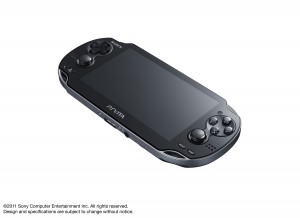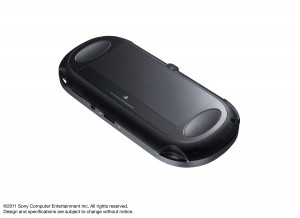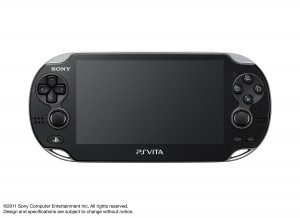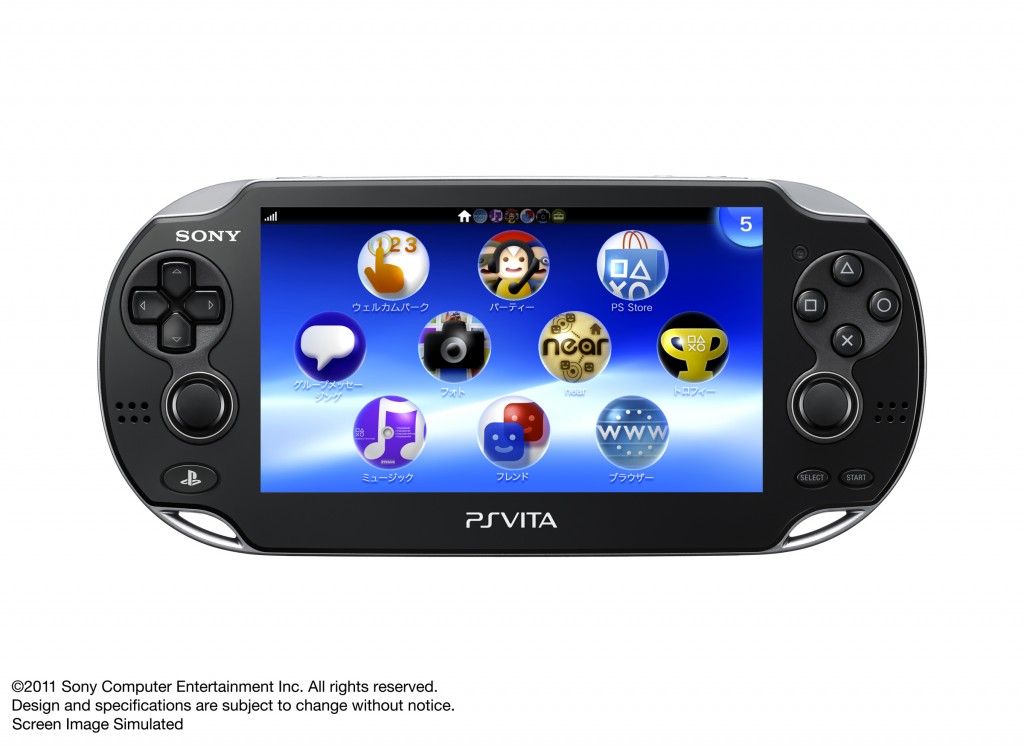Hands On With the PlayStation Vita
 This year’s EuroGamer Expo will be remembered for years to come as the expo with the most AAA content. Of the 70 games on show around 90% of them were day one buys. Even with all this triple A content on offer, there was something showcased that outshone them all and that was Sony’s newest handheld, the PlayStation Vita. Wanderson75.net was lucky enough to get hands on the Vita and put it through its paces. Here’s what we thought.
This year’s EuroGamer Expo will be remembered for years to come as the expo with the most AAA content. Of the 70 games on show around 90% of them were day one buys. Even with all this triple A content on offer, there was something showcased that outshone them all and that was Sony’s newest handheld, the PlayStation Vita. Wanderson75.net was lucky enough to get hands on the Vita and put it through its paces. Here’s what we thought.
At first glance, you think you’re being given an updated PSP with a larger screen and an extra analogue stick. However, when you get the system in your hand you realise that this is a completely different, and much more powerful, beast.
I’ll start with the aesthetics of the system. The PS Vita’s form resembles that of the PSP, but it’s slicker, smoother and easily distinguished from its predecessor by the presence of the second analogue stick and the repositioned start and select buttons. Vita is slightly larger than the PSP, measuring in at 182mm x 83mm, but the sleeker bodywork means that it feels much more comfortable. Finished in glossy piano black, Vita looks like a classy piece of kit that wouldn’t look out of place in an Apple beauty parade.
What features does the Vita offer then? After Nintendo placed their faith in their killer feature for 3DS (that’s the 3D without glasses feature, for those of you who don’t know), Sony has gone for a more scattergun approach and given Vita a whole host of features to delight users with. The most obvious of these is the addition of a second analogue stick. Now I can hear some of you saying that’s not really a feature, but trust me, it’s a fundamental component of Vita that makes a huge difference to how it behaves as a handheld. After playing Uncharted: Golden Abyss, the addition of the second stick makes complete sense. Although you can use the touch screen to move Drake, there is something very familiar and comforting about the ability to move both the character and the camera in the same way you would if you were playing on a console.
Another of the more obvious features is the screen. The PS Vita boasts a 5.1 inch OLED screen that provides remarkable fidelity in colour and is the perfect partner to the outstanding graphics that can be produced. That’s not all though. PS Vita’s screen also doubles up as a touchscreen – and quite an impressive one at that. It is incredibly accurate, which was demonstrated during my playthrough of LittleBig Planet, as one puzzle required a sweep of piano keys that was managed masterfully by Vita’s screen. It also has a multitouch feature allowing players to play multiplayer on the same screen.
Sony also saw fit to add in motion control. This isn’t the flimsy, clumsy and inaccurate system that you get with the 3DS; it’s an accomplished and polished feature that really works. This was shown off in Wipeout 2084, where motion controls could be used instead of analogue control, and it is here where the accuracy of PS Vita’s motion sensor is revealed. While with the 3DS, motion control is supplementary to standard buttons, with the Vita it is so effective that it can be used without alternatives.
One feature that is less obvious though is the rear touchpad. Sitting silently on the back of the PS Vita you could easily overlook it, but do so at your own peril, as it’s an addition that is sure to make PS Vita a truly unique proposition for gamers and developers alike. For example, LittleBig Planet utilized this feature with a puzzle that sees you push blocks in with the touchscreen and push them back out using the rear touchpad. It’s an interesting concept that is sure to give rise to some truly mind boggling puzzles and some great level design in games that choose to use it.
 The touchpad isn’t without its problems though. It can be activated accidentally because of the way you hold the PS Vita, which can become quite annoying – especially when you need to be accurate. Also, there is no feedback when you touch the touchpad, which sometimes invokes the feeling that you’re all thumbs flailing around in the dark. However, if the rear touchpad can be tightened up, it will be a truly unique and innovative feature that not only sets the PS Vita apart from the handheld and console crowd, but also from the touchscreen-based smartphone crowd that is making massive inroads on the handheld gaming market.
The touchpad isn’t without its problems though. It can be activated accidentally because of the way you hold the PS Vita, which can become quite annoying – especially when you need to be accurate. Also, there is no feedback when you touch the touchpad, which sometimes invokes the feeling that you’re all thumbs flailing around in the dark. However, if the rear touchpad can be tightened up, it will be a truly unique and innovative feature that not only sets the PS Vita apart from the handheld and console crowd, but also from the touchscreen-based smartphone crowd that is making massive inroads on the handheld gaming market.
The graphics are also a stunning feature of the PS Vita. I was fortunate enough to play LittleBig Planet, Uncharted: Golden Abyss, and Wipeout 2084, each of which demonstrated how the PS Vita’s graphical power can be harnessed to produce spectacular games in very different styles. LittleBig Planet retains the toybox feel that the franchise is famous for, with stages that look like they were lifted directly from the PS3 version. The same can be said for Uncharted and Wipeout alike. Both games have a level of graphical quality that are simply unmatched on handhelds and almost equal to the current generation of HD consoles. Wipeout’s racers are brilliantly detailed, to the point where you can clearly see the writing on each racer. Similarly, Uncharted is sumptuous with an outstanding character model of Drake being set in a beautifully rendered jungle that has by far the best water effects and plant-life.
The features that Sony has packed the PlayStation Vita with are impressive on their own, but when they are used in conjunction with one another you immediately see that Sony has created a device that is sure to define the “new state of the art” in mobile gaming. LittleBig Planet demonstrates this with single stages requiring you to use some or all of the PS Vita’s features together to solve puzzles. After only 10 minutes play, I was undertaking some of the more difficult puzzles available with ease and it was entirely down to how effortless gameplay became.
So what about the games? As I have mentioned, amongst the games that were being showcased on the PlayStation Vita, I played LittleBig Planet, Wipeout 2084, and Uncharted: Golden Abyss, and each of these were outstanding. All of the demos showed something different about the PS Vita, but every one of them left you with the same conclusion: the Vita is going be a success.
However, that’s enough about facts, figures and details. What did I actually think?
 As a 3DS owner, I was immensely interested to see how Sony would respond to 3DS, and I have to say my mind was blown. Every feature of the PlayStation Vita was brilliant! Yes, it may be a little bigger than I would have liked, but if that means I get to game on an OLED screen then I don’t mind. The dual analogue sticks are a master stroke that makes Nintendo’s circle pad and stylus setup feel archaic and broken. The PS Vita’s touchscreen was much more responsive and accurate than that of the 3DS, and the rear touchpad felt better and better the more I played. My only real gripe was the location and size of the face buttons: To accommodate the second analogue stick, they have been moved up and made smaller. They are still responsive, but their positioning feels somewhat unnatural and a little off-putting.
As a 3DS owner, I was immensely interested to see how Sony would respond to 3DS, and I have to say my mind was blown. Every feature of the PlayStation Vita was brilliant! Yes, it may be a little bigger than I would have liked, but if that means I get to game on an OLED screen then I don’t mind. The dual analogue sticks are a master stroke that makes Nintendo’s circle pad and stylus setup feel archaic and broken. The PS Vita’s touchscreen was much more responsive and accurate than that of the 3DS, and the rear touchpad felt better and better the more I played. My only real gripe was the location and size of the face buttons: To accommodate the second analogue stick, they have been moved up and made smaller. They are still responsive, but their positioning feels somewhat unnatural and a little off-putting.
Graphically, I was stunned. I never thought that I would see the day when the technology of a handheld gaming device would rival that of a console, but PS Vita is a system that does that with ease. Considering that the games I played are launch titles, the mind boggles at the thought of what could be achieved in a year’s time.
Overall, I was extremely impressed by the PS Vita, but it wasn’t for the reasons that you might think. Yes, it has brilliant features; and yes, it has graphics that match consoles, but what stuck out the most was how much fun I had whilst playing. For me, the PSP was characterised by how awkward and uncomfortable it was during gameplay, whereas PS Vita is comfortable and easy to use, making playing it a lot more fun. It’s a system with console credentials and has the sense of humour and ease that makes it stand alone in a market that is saturated by smartphones and dominated by Nintendo.
Nintendo should be thanking their lucky starts that PlayStation Vita isn’t launching at the same time worldwide because if it did, 3DS would be in serious trouble.
About This Post
